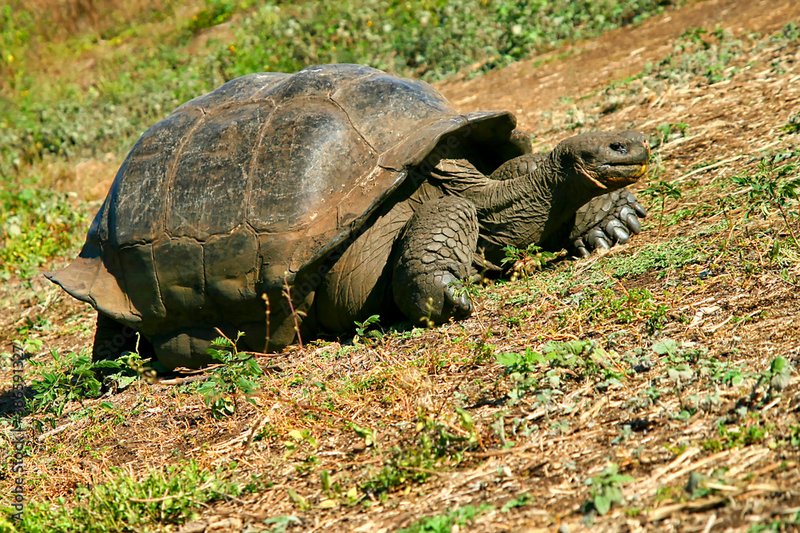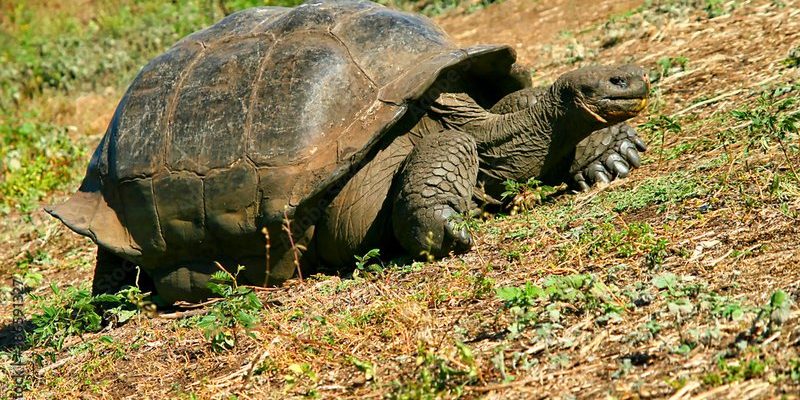
You might be wondering, “What puts them in danger?” and “What’s being done to help?” Let’s dive into the issues facing these remarkable reptiles and explore the conservation efforts that aim to protect them. After all, understanding their plight is the first step in helping secure their future!
Why Are Galápagos Tortoises Endangered?
The Galápagos tortoise is a unique creature, and it’s no wonder they’ve captured the hearts of many. But several threats put them on the endangered list. First off, habitat loss plays a significant role. As humans continue to develop the islands for tourism and agriculture, these tortoises are losing their natural homes. Imagine trying to find your way in a maze that’s constantly changing—that’s how these tortoises feel when their habitats shrink or disappear.
Another major factor is invasive species. When non-native animals like goats were introduced to the islands, they began competing for food. Tortoises, which primarily feed on grasses and plants, found their food supply dwindling. It’s like trying to share your lunch with a friend who just keeps eating all the fries! Additionally, invasive species can also bring diseases that the tortoises are not equipped to handle.
Overharvesting is another concern. In the past, tortoises were hunted for their meat and oil, significantly reducing their population. Even today, poaching remains a threat, as illegal hunting persists in some areas. It’s a sad reality for these creatures that have lived for over a century; their longevity doesn’t make them immune to such risks.
The Role of Conservation Programs
Conservation efforts play a vital role in protecting the Galápagos tortoise and ensuring they thrive for future generations. Various organizations, including the Galápagos National Park, have launched initiatives to save these tortoises. These programs focus on restoring habitats, controlling invasive species, and educating the public about the importance of preservation.
One of the notable efforts is the Tortoise Breeding Program. This program captures young tortoises, raises them in safe environments, and then releases them back into the wild once they’re mature enough to fend for themselves. This way, they face fewer threats from predators and habitat loss during their vulnerable early years. It’s like giving them a head start in a race against extinction!
Education is also a crucial aspect of conservation. By raising awareness and involving local communities in protection efforts, organizations work to ensure that everyone plays a part. Imagine a neighborhood coming together to plant trees that provide shelter for local wildlife—this kind of collective action can make a real difference.
Successful Recovery Stories
Despite the challenges, there are heartening stories of recovery. Take the Pinta Island tortoise, for example. Once believed to be extinct after the death of the last known individual, Lonesome George, scientists have worked tirelessly to study and replicate their genetic lineage through breeding projects. This work illustrates that with effort and determination, hope can persist even in dire situations.
Another success story comes from Santa Cruz Island, where habitat restoration projects have flourished. By removing invasive species and replanting native vegetation, the tortoise population has started to bounce back. It’s like breathing fresh air into a stuffy room—suddenly, there’s space for life to flourish again.
These recovery efforts are not just about saving tortoises; they also pave the way for a healthier ecosystem. When tortoises thrive, they help maintain the balance of their environment by aiding in seed dispersal and vegetation growth. Their comeback benefits numerous other species as well.
The Importance of Genetic Diversity
You might be wondering why genetic diversity is essential for the Galápagos tortoise. Well, think of it like a family tree. A diverse genetic pool means healthier offspring and better chances of survival in changing environments. Unfortunately, the tortoise populations have faced bottlenecks due to overharvesting and habitat loss, reducing genetic variability.
To combat this, conservationists are focusing on maintaining and enhancing genetic diversity through selective breeding programs. This is crucial for ensuring that future generations are resilient to diseases and environmental changes. It’s like adding new branches to that family tree, which can help facilitate robust growth.
Moreover, scientists are looking closely at the genetics of various tortoise populations. By understanding their differences, conservationists can tailor efforts to suit specific groups better. It’s a meticulous process, but one that can significantly impact the future of these tortoises.
How You Can Help
You don’t have to live on the Galápagos Islands to make a difference in the lives of these tortoises. Here are some simple ways you can contribute:
- Support Conservation Organizations: Donate to or volunteer with organizations focused on wildlife conservation.
- Be an Advocate: Raise awareness about endangered species and the importance of biodiversity in your community.
- Responsible Tourism: If you’re lucky enough to visit the Galápagos, make sure to follow guidelines that protect the local wildlife and environments.
- Educate Yourself and Others: Learning about the issues facing the Galápagos tortoise will empower you to spread the word and inspire action.
Each small action can contribute to the larger conservation efforts that will help protect these remarkable creatures.
A Bright Future for Galápagos Tortoises
While the Galápagos tortoise faces many challenges, the efforts underway to protect them are promising. With dedicated conservation programs and a growing awareness of their plight, there’s hope for future generations of these iconic reptiles.
Honestly, it’s inspiring to see how conservation can bring together communities, scientists, and everyday people to rally around a common cause. Much like the tortoises themselves, these efforts remind us that resilience is possible when we work together.
So, let’s keep our eyes on the prize—ensuring that the Galápagos tortoise not only survives but thrives for many more years to come. Remember, even small contributions add up to make a significant difference. Together, we can ensure these gentle giants continue to roam the Galápagos Islands for generations to enjoy.

